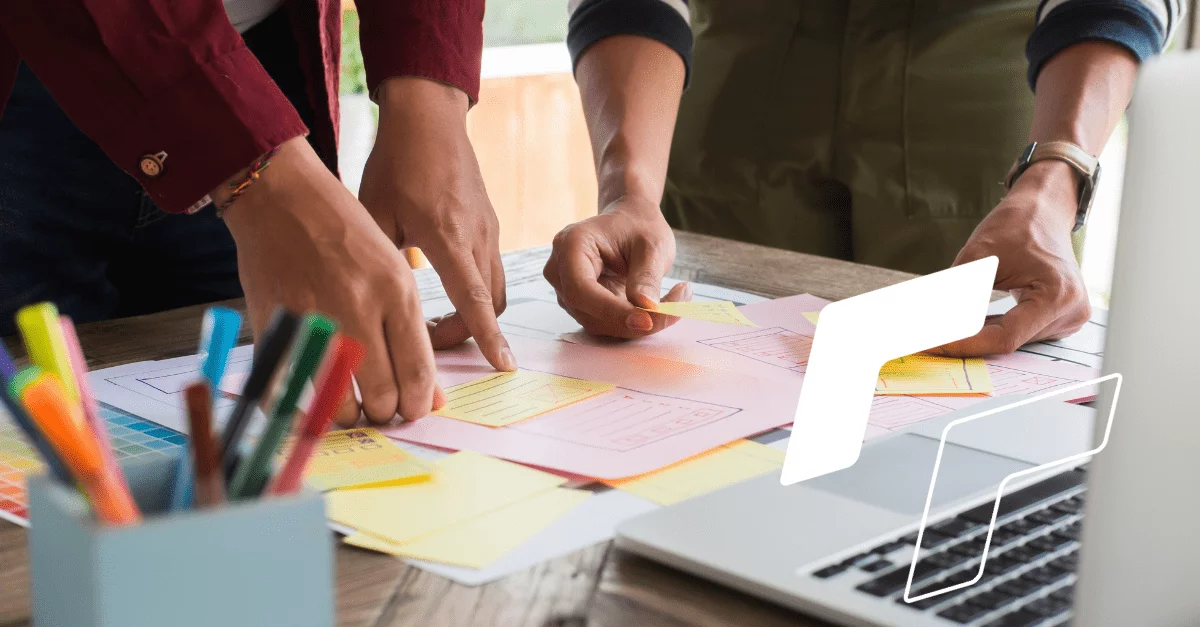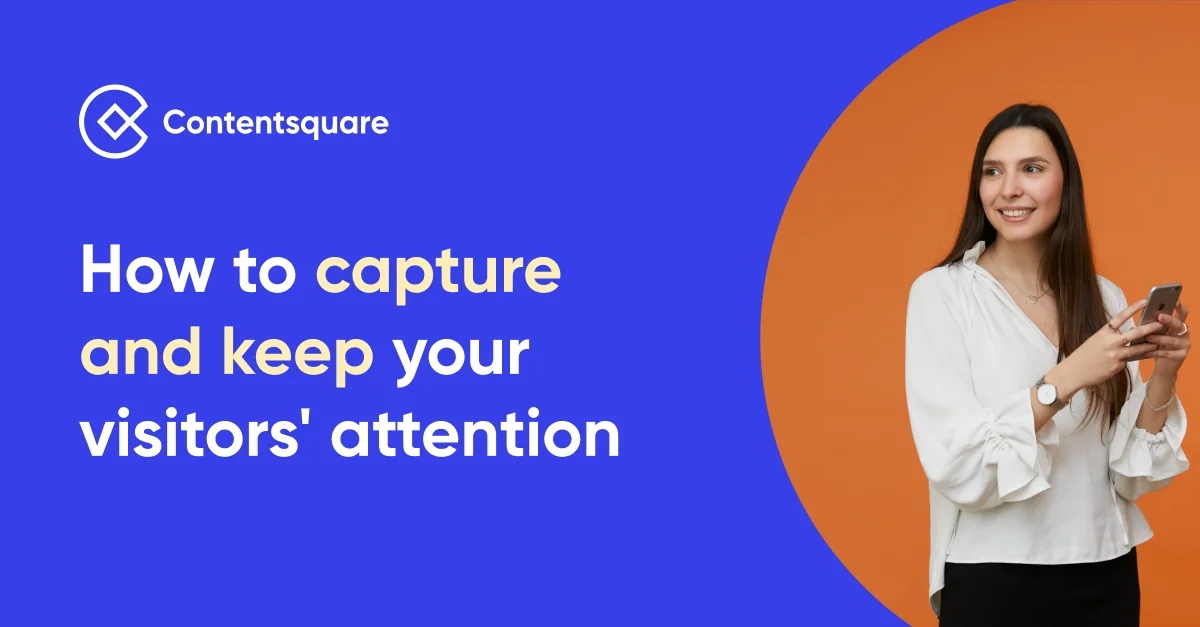Using Behavioural Segmentation To Better Understand Your Customers

But conventional marketing focuses on who your customers are and often overlooks what your customers do.
With modern data automation technology, you have access to a plethora of information to personalize customer experiences and increase your KPIs across the board.
This post will explain behavioral segmentation, different segmentation types, and real-life examples to help you apply these principles in your business.
Behavioral segmentation explained
What is behavioral segmentation?
Behavioral segmentation is the process of using technology to group your audience, prospects, and customers by the actions and behaviors they take in your business.
For example, your customers can be segmented by:
- How they interact with your product or service
- Cyclical purchasing patterns, e.g., spending more during the holiday season or birthdays
- The knowledge of your brand and offerings, e.g. past purchase and engagement history
In contrast, conventional segmentation, including; psychographic, demographic, and geographic, looks at who your customers are and where they live.
Why is behavioral segmentation so important?
Identifies most engaged users
Your most engaged users are your hottest leads.
For instance, prospects who regularly add products to the cart or spend time watching your webinars have the highest chance of converting.
Capturing behavioral data based on engagement levels enables you to prioritize your customer segments. And in return, you become more efficient with your marketing efforts—saving you time and money in the process.
(Source: Yieldify)
Improves messaging accuracy
Social media giants like Facebook and YouTube have mastered behavioral segmentation through their advanced algorithms.
Feeds serve content that perfectly matches the interest of each user, keeping them on the platforms longer.
You can do the same in your business.
Say you have an eCommerce beauty store with different product categories. Behavioral segmentation enables you to segment your prospects by user preferences like “interested in makeup “ vs. “interested in skincare.”
Now you can create personalized messaging in your marketing emails and digital ad campaigns based on these interests.
(Source: Yieldify)
Provides refined personalized experiences
Behavioral segmentation is a powerful tool to understand the needs and wants of your customers. You want your customers to feel like, “wow, this brand gets me!”
By analyzing customer trends, triggers, and even split testing different behaviors, you can start predicting what your users will do and blow them away.
For example, display related products on your website, provide a coupon code in an abandoned cart email sequence, or surprise customers with a free gift after spending a certain amount with your business.
Builds brand loyalty
Customers who feel they’ve been supported throughout interactions with your business will naturally favor your brand over your competitors.
Behavioral segmentation means you can service your customers pre and post-purchase and reach high levels of customer satisfaction.
By strategically using behavioral data to increase the personalization of your campaigns, you’ll increase retention, customer lifetime value, and overall revenue.
Top 10 criteria for behavioral segmentation
1. Purchasing behavior
Purchase behavior segmentation is about pinpointing how customers respond during the buying decision process.
For example, you could analyze:
- Past purchases to predict future purchases
- The ease or difficulty of the buying process
- The social signals that motivate your customers to buy, customers, e.g., proof, price, low-risk, urgency, and impressionability
By learning how your customers interact with your core sales process, such as your website, you can extrapolate your findings and apply them to all your channels for better conversion rates.
2. Benefits sought
Benefit-driven behavior segmentation is about collecting insights around what customer problems are most important to solve when interacting with your brand.
So when a customer places greater value on one feature over another, these benefits are motivating factors influencing the purchasing decision.
Say customer A and customer B are considering buying the same smartphone.
Customer A is partially blind, so accessibility features like text-to-speech are essential to them.
Customer B wants to build up their Instagram following. So the camera capabilities are critical for capturing high-quality images and videos.
The smartphone is a suitable solution for both customers despite seeking vastly different benefits.
3. Customer journey stage
Customer journey segmentation is about analyzing and categorizing customer responses during each stage of the sales cycle.
The objective is to identify which phase your customer is in—so you can make adjustments to move them onto the next step of your funnel.
A typical example is when a prospective customer leaves products in your online checkout or a wishlist. Armed with this information, you can send timely coupons codes to entice them to complete their order.
Try to gather as many data points as possible across all your channels to categorize your prospects in your customer journey effectively.
4. Usage
Customer usage segmentation is the process of grouping prospects based on how they use your product or service.
For instance, if you run a gym with a monthly membership, how often do customers attend sessions each week?
Or, if you have a software business, what features do customers use the most?
By segmenting your customers by usage, you can optimize your onboarding systems, support, product development, and messaging for better engagement and conversions.
5. Occasion or timing
Time-based segmentation is about collecting data to accurately predict when customers are most likely to purchase your product or service.
Examples include universal occasions such as holidays and seasonal events. Or recurring personal circumstances like how often customers purchase toilet paper, baby diapers, or how often they need to service their car.
Other examples are rare occasions like weddings or funerals. You’d need precise user signals to segment your customers for such events.
By predicting when your customers want your product, you can get ahead and position your brand to be top-of-mind.
6. Customer satisfaction
Segmenting your customers by satisfaction level enables you to adjust your approach to meet your customers exactly where they are for the best results.
For example, if your behavioral data shows a group of delighted customers, you could upsell more products and services.
Conversely, using review monitoring tools to identify & segment unsatisfied customers enables you to reach out to turn the relationship around or develop effective re-engagement campaigns.
7. Customer loyalty
Segmentation by customer loyalty is leveraging behavioral data to group customers who have frequently done business with you.
Loyal customers are likely to buy your new products, leave testimonials, participate in case studies, do beta testing, and send referrals.
Examples of customer loyalty segmentation include frequent flyer points with airlines, seasonal ticket holders for sporting teams, and platinum credit card members.
8. Interest
You can uncover what sparks your customers’ curiosity through interest-based behavioral segmentation and create personalized offerings that resonate with them.
Have your customers expressed interest in eco-living? Then develop a sustainable product line to serve these interests.
You can also use multiple interests to develop new customer personas. For example, you can segment customers interested in beauty and cruelty-free products then market to them accordingly.
Another example is using looking at customer demand through Google searches. Some marketing tools provide data on what people search for and how much interest a particular query attracts.
So if you operate a blog providing information about how to create a website, you can analyze how many people are searching for the query “WordPress plugins for blogs” to see if it’s worth making a resource to serve that demand and attract users to your articles.
9. Engagement level
Engagement level segmentation is grouping users by the level of commitment they’re showing towards your products or services.
Engagement is a similar measure to usage; however, engagement encapsulates a broader set of behavioral data.
For instance, a highly engaged customer might open your marketing emails 80% of the time, or respond to your feedback survey.
The more a prospect is engaged with your business, then it’s likely that:
- They’ll make a purchase
- They’re developing trust with your company
10. User status
Segmenting your customers by user status is about classifying customers by the different relationship levels with your product.
For example, if a stranger calls your framing shop to organize a quote, then the person will be noted as a prospect in your system. Then if they buy a frame, they’re now a first-time buyer. If that person purchases multiple frames in the next 12 months, then they’ll become repeat customers.
Another way to think of user status is:
- Light users
- Medium users
- Heavy/power users
By segmenting your audience by status, you can develop experiences for each status type to maximize engagement.
Behavioral segmentation real-life examples
Usage behavior: BabyCentre UK
BabyCentre UK provides resources for new and expectant parents.
Users can interact with BabyCentre’s Facebook messenger bot and get answers to questions based on suggested topics.
(Source: Yieldify)
In the image above, the parent wanted more information about weaning when interacting with the messenger bot. BabyCentre responded to the user by providing a list of signs to look out for and recipe suggestions for when the child is ready for solid foods.
By creating an environment where users can go back and forth with the chatbot, BabyCentre can collect valuable behavioral data and segment their audience to deliver relevant information.
When BabyCentre compared the chatbot’s effectiveness against their email marketing efforts, the messenger bot recorded a read rate of 84% and a click-through rate (CTR) of 53%.
The engagement rate was 1,428% higher than BabyCentre’s email marketing funnel, proving how effective segmentation can be when executed correctly.
Occasion-based: Guinness
Guinness, the well-known Irish stout manufacturer, also happens to be a fantastic example of occasion-based customer segmentation.
Guinness sponsors the Six Nations Rugby Cup each year and experiences a boost in sales through fans purchasing their drinks to complement the sporting event.
However, with industry statistics showing a decrease in demand for alcoholic beverages, Guinness worked to find a marketing strategy that appeals to those who don’t drink while retaining their existing customers.
So right before the Rugby tournament began, Guinness ran a 30-second advertisement promoting their new product: Guinness Clear.
(Source: Ads of. the World)
The campaign was a hit, reaching 21 million people and gathering global attention. Through all the activity off the back of the ad, Guinness started segmenting their customer base into:
- Existing customers who wanted clarification on this new drink
- Customers who were likely to buy, but only in conjunction with the rugby event
- New or occasional drinkers who were won over by the marketing campaign
From there, Guinness sent personalized communications out to these groups to maximize sales during the event.
Benefits-sought: Olay
American Skincare brand Olay created an innovative Skin Advisor AI bot to interact with customers and collect valuable insights for segmentation.
The advisor asks customers five to seven questions about their skin. The AI then reveals the true age of the customer’s skin and suggests products.
(Source: Yieldify)
By asking customers questions about their skincare routine, the advisor collects data based on what challenges users are experiencing and what benefits they’re truly seeking.
The insights are so helpful that they can sometimes inform product development.
For instance, through the skin advisor bot, Olay found that many users desired fragrance-free products. Olay had no such products in their line but could send the request to their manufacturers to develop a solution.
Olay also found that customers wanted retinal-based products but didn’t offer any, losing them sales. Olay responded and released Retinal 24 which has become one of the brand’s top-selling products.
Loyalty-based: DavidsTea
DavidsTea is a specialty tea retailer that wanted an exciting way to engage their most loyal customers.
They created a timeline-style email campaign which has been widely lauded in the marketing community.
(Source: Yieldify)
When customers reach a specific milestone with DavidsTea, they receive this timeline email that captures when they first purchased tea and their most purchased tea blends.
By combining usage segmentation with loyalty segmentation, DavidsTea can produce this fun and highly personalized email, making their customers feel special and inclined to purchase more tea in the future.
Start using behavioral segmentation today
Behavioral segmentation is a great way to get closer to your customers and drive revenue.
Remember to always:
- Leverage modern technology to learn how customers interact with your brand.
- Analyze and automate customer behavioral data to group your users.
- Use behavioral segmentation to develop enriched user experiences.



